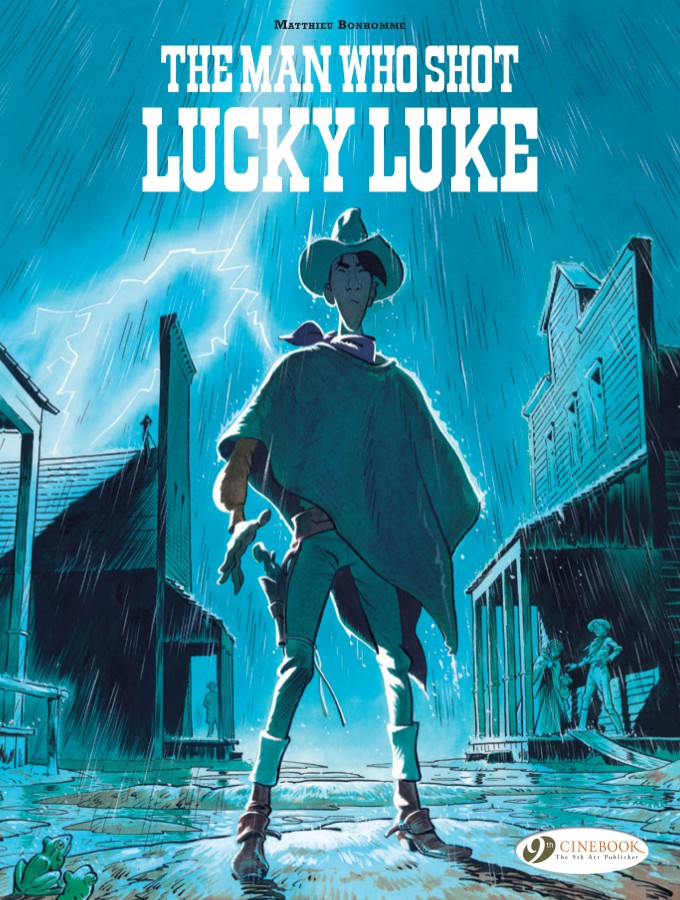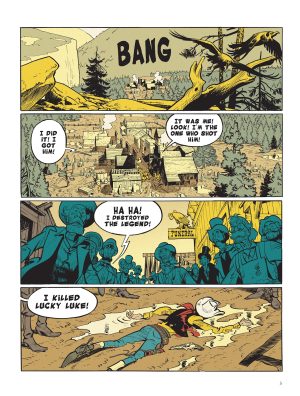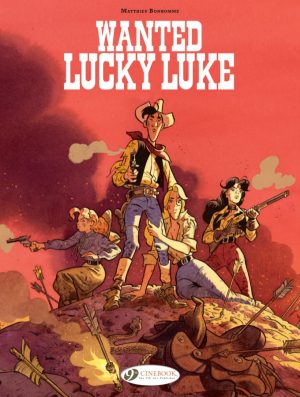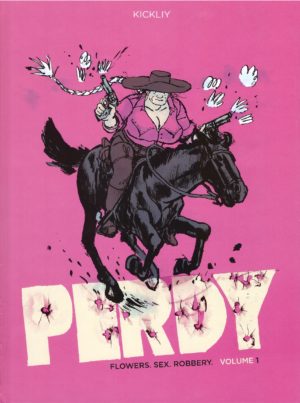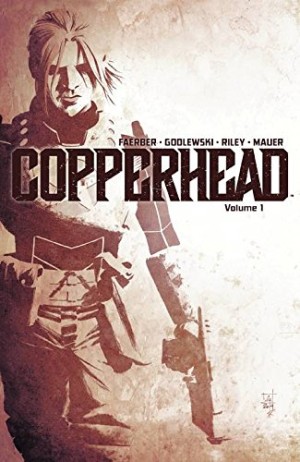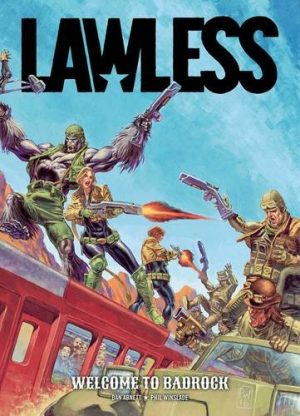Review by Karl Verhoven
Since 2016 there has been an occasional series of Lucky Luke adventures running parallel to the traditional comedy westerns produced by Jul and Achdé. These are produced by assorted creators, and the first approached was Matthieu Bonhomme, best known to English language readers for his art on The Marquis of Anaon.
Bonhomme begins with a heartfelt appreciation for the opportunity to work on a character he notes as “a traveling companion, a childhood friend”. Bonhomme’s speciality is historical drama, and his backlist includes a series of short biographies of notable Western figures supplied as inserts in Belgian anthology Spirou. Of the creators to work on this series he’s the only one who takes a more realistic approach to the character, using Lucky Luke, but as a more or less standard Western hero. It’s like one of those darker reboots the Vertigo imprint made of obscure DC superheroes.
The creator’s art is to convince that the impossible may have occurred, and the sample art is certainly one stunner of an opening page, even if readers in their hearts know Luke surely can’t be dead. After all, he’s the man who shoots faster than his own shadow, although that he’s lying face down indicates he’s been ambushed from behind. Bonhomme immediately jumps back a few days to Luke arriving in Froggy Town in an atmospherically created downpour and rapidly realising it’s not the place for him. A strange encounter with the Sheriff is followed by a foreboding conversation with a gunslinger raising the prospect of there always being someone who wants to make their reputation by killing Lucky Luke. “We’ll leave in the morning”, he tells his horse Jolly Jumper, “I don’t like this kind of place much”. However, that not how it plays out.
It’s a very modern take on Luke, although subtly so. Luke denounces killing, while his attempts to smoke are constantly frustrated by circumstance, the only humour Bonhomme permits, and villainy is eventually given some mitigating circumstances. Despite the town being convinced a stagecoach robbery was carried out by a native American, here referred to in the language of the times as an Indian, Bonhomme’s art raises other suspicions. He poses the cast well, attitudes conveyed by stance as well as deeds, and enjoys supplying the splendour of the landscapes.
Readers are left with little doubt from the start where the villainy lies, but Luke stoically puts up with the deception as Bonhomme feeds small homage moments from Western films into a plot that’s broadly original. There are plenty of clever moments, such as Luke being just one man, but faced with simultaneous threats in different places, and a surprising shredding of Western conventions toward the end. The explanation for Luke being shot is proficiently set up, but won’t fool everyone, and Bonhomme doesn’t really bother disguising who’s actually responsible for the stagecoach robbery.
The remaining question is whether the title notwithstanding, The Man Who Shot Lucky Luke actually needed Lucky Luke. Bonhomme presents Luke’s honourable character, but only a few touches distinguish him when removed from his comedic environment, and truth be told, this could have featured any leading man set up with a reputation. Commercially, though it makes perfect sense, and it’s also a creative success. Bonhomme reprises the format with Wanted: Lucky Luke.
